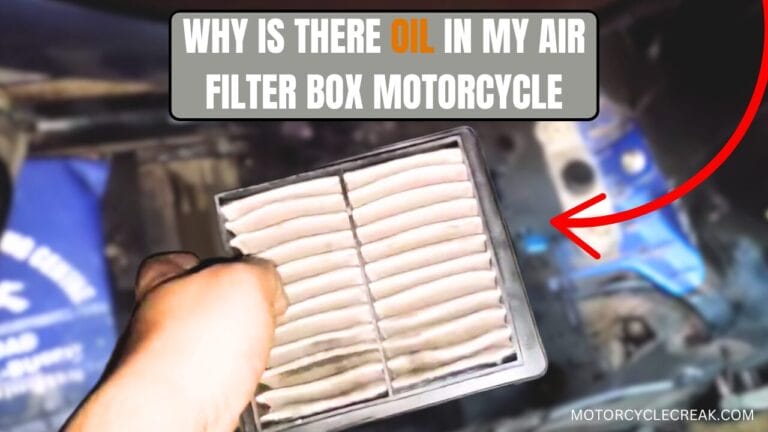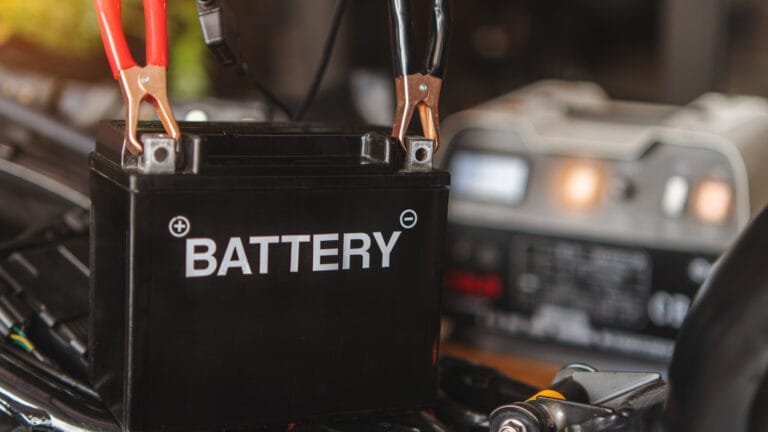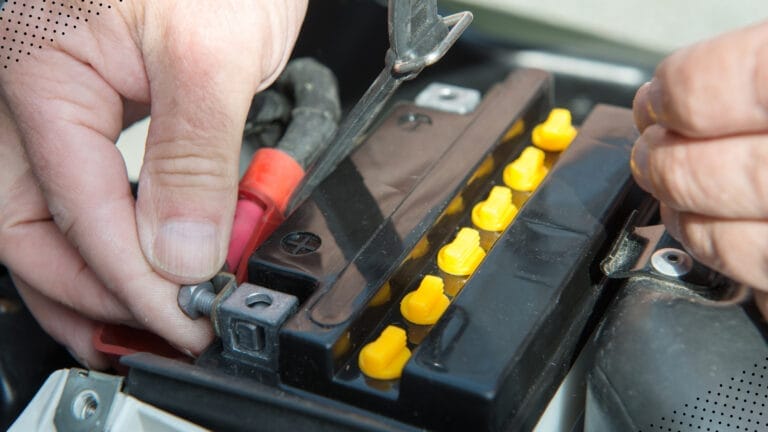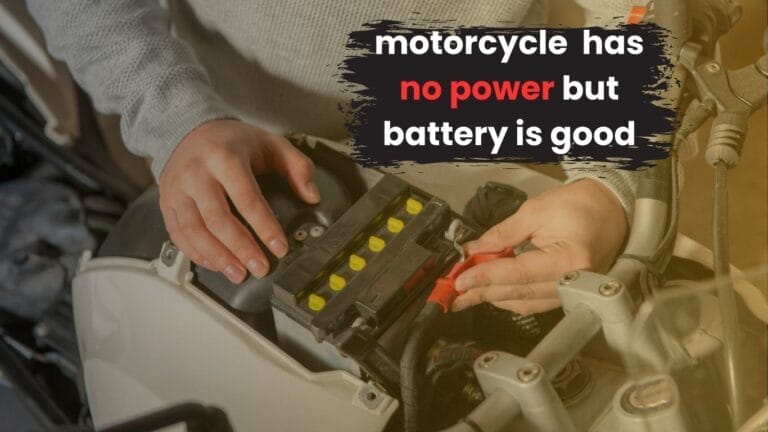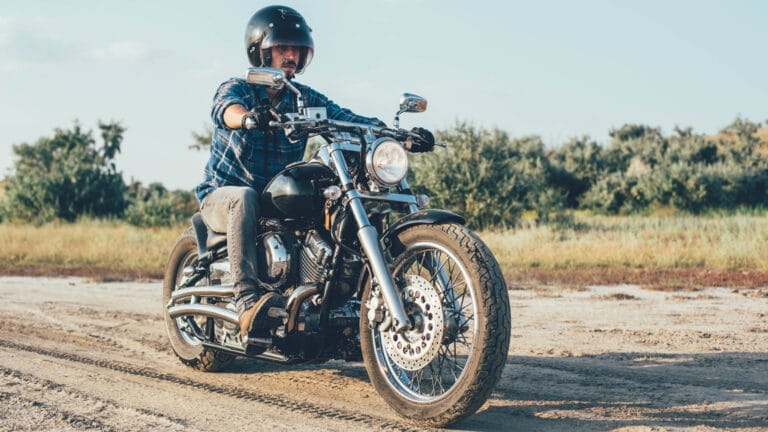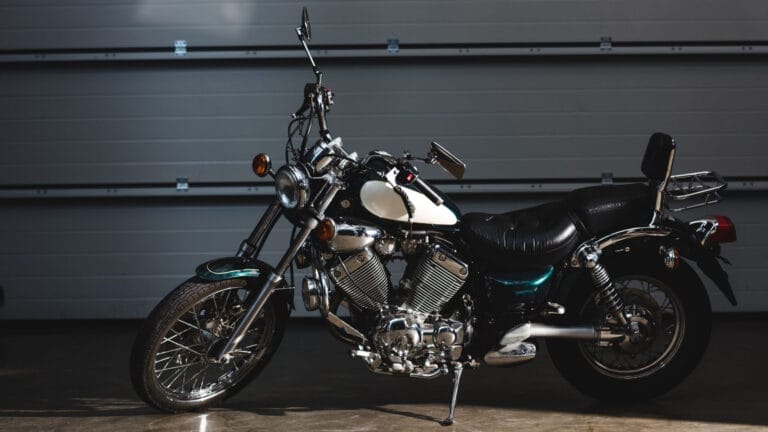Why Your Motorcycle Dies When Given Throttle: 6 Causes and Solutions
It is frustrating if your bike suddenly dies when you give it throttle. There are many possible reasons why this occurs, and they can vary depending on the type, model, and age of your bike.
So, What are the reasons why your motorcycle dies when given throttle?
There are several reasons why this can happen in the first place, and they include the following:
- Blocked or dirty fuel filter
- Faulty or stuck choke
- Blocked or dirty carburetor
- Faulty or leaking fuel valve
- Worn spark plugs
- Blocked or dirty fuel injector
Continue reading to learn more about these possible reasons for your motorcycle dying when you provide throttle. You will also learn how to solve each of them correctly.
Why Your Motorcycle Dies When Given Throttle
Here are some of the common causes of motorcycle stalling when given throttle.
All possible reasons are discussed below.

Blocked Or Dirty Fuel Filter
The fuel filter is a device that filters out dirt, debris, and water from the fuel before it reaches the engine. However, over time, this filter accumulates debris and carbon deposits on it. If your motorcycle’s fuel filter is blocked or dirty, it will restrict the fuel flow and cause the engine to starve for fuel.

Solution:
To fix this problem, you will have to manually clean the fuel filter. Here is how to do it.
- Identify the fuel filter’s location on your motorcycle, usually near the fuel tank or along the fuel line.
- Carefully disconnect the fuel line from both ends of the filter, using pliers if needed.
- Take out the old fuel filter, ensuring it doesn’t introduce dirt into the fuel system.
- Examine the filter for dirt or debris; if dirty, clean it using compressed air or by rinsing it with an appropriate solvent.
- Place the cleaned or new filter back into position, ensuring it aligns with the directional arrow indicating fuel flow.
- Reattach the fuel line securely to both ends of the filter, using pliers if necessary.
Blocked Or Dirty Carburetor Jets
The carburetor of your motorcycle mixes the air and fuel in the correct ratio for the engine. It has several jets, which are small openings that spray the fuel into the air stream. If the jets are blocked or dirty, they will affect the fuel metering and cause your motorcycle’s engine to run lean.
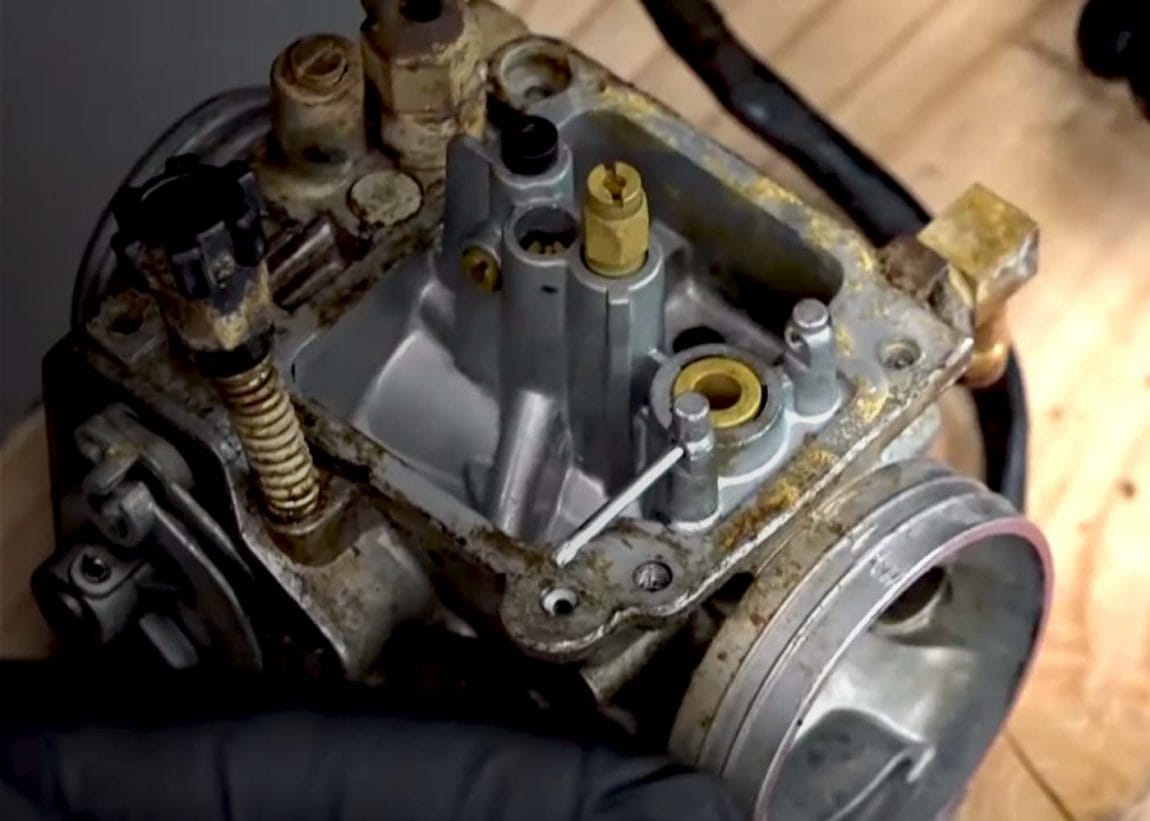
Solution:
You need to remove and clean the carburetor jets. Do this by following the steps below.
- Find the carburetor on your motorcycle, typically situated near the engine, and identify the jets within the carburetor.
- Shut off the motorcycle’s fuel supply to prevent fuel from flowing into the carburetor during the cleaning process.
- Unscrew the bolts securing the carburetor bowl, exposing the jets and allowing you to access them easily.
- Locate the jets within the carburetor bowl – main jets control fuel flow at higher speeds, while idle jets manage fuel at lower speeds.
- Carefully use a jet wrench or a small flathead screwdriver to unscrew the jets from their positions in the carburetor bowl.
- Examine the jets for any clogs or debris, then clean them thoroughly using a carburetor cleaner and compressed air.
- Screw the cleaned or new jets back into their original positions in the carburetor bowl, ensuring a snug fit.
- Securely reattach the carburetor bowl with its bolts, making sure it’s sealed properly to prevent air or fuel leaks.
- Restore your motorcycle’s fuel supply, and start the engine to confirm that the cleaned jets have improved performance.
Blocked Or Dirty Fuel Injectors
Your motorcycle’s fuel injectors normally spray the fuel into the engine’s intake manifold or directly into the cylinders. They are controlled by the engine’s computer, which determines the amount and timing of the fuel injection based on various sensors and parameters.
If the fuel injectors are blocked or dirty, they can affect the fuel atomization and distribution and cause the engine to run lean. This is why your motorcycle will die when you provide throttle, as there is not enough power to keep it running.

Solution:
Follow this guide below to clean your dirty fuel injectors.
- Identify the fuel injectors on your motorcycle, typically attached to the fuel rail or intake manifold.
- Carefully disconnect the fuel injectors to expose them for cleaning.
- Mix a high-quality fuel injector cleaner with gasoline following the product instructions.
- Connect the fuel injector cleaning kit to the injectors, ensuring a secure and leak-free connection.
- Start the motorcycle and let it run, allowing your cleaning solution to flow through the fuel system and clean the injectors.
- Once the cleaning is complete, turn off the engine and disconnect the cleaning kit from the fuel injectors.
- Attach the fuel injectors back to their original positions, securing them tightly to prevent leaks.
Faulty Or Stuck Choke
The choke is a device that enriches the air-fuel mixture when the engine is cold, to help it start and warm up. If the choke is faulty or stuck, it can cause the engine to run rich even when it is warm. This will cause the engine to lose power and die.
Solution:
To fix this issue, follow the steps below.
- Find the choke lever or knob on your motorcycle, usually near the handlebars, and identify if it’s stuck or not functioning correctly.
- Spray a small amount of lubricant, such as WD-40, on the choke mechanism to help loosen any rust or debris causing the sticking.
- Gently manipulate the choke lever back and forth to distribute the lubricant and free up any stuck components.
- If the choke lever feels loose, adjust the cable tension using the adjustment nuts near the carburetor or handlebars.
Faulty Or Leaking Fuel Valve
The fuel valve is a device that controls the fuel flow from the fuel tank to the engine. If the fuel valve is faulty or leaking, it can cause your motorcycle’s engine to get too much fuel and run rich.

Solution:
To fix this problem, you need to check the fuel valve operation and repair or replace it if necessary.
You should also check the fuel tank and the fuel cap for any leaks, cracks, or vents that can affect the fuel pressure and delivery. However, as this is a complicated process, you should let a professional mechanic do it instead.
Watch the following video on how to replace a faulty fuel valve.
Worn Spark Plugs
Your engine’s spark plugs have electrodes that are exposed to high temperatures and pressures. It can wear out or get fouled by carbon deposits, oil, or fuel. If your spark plugs are worn, they will affect the spark quality and timing, causing the engine to die.
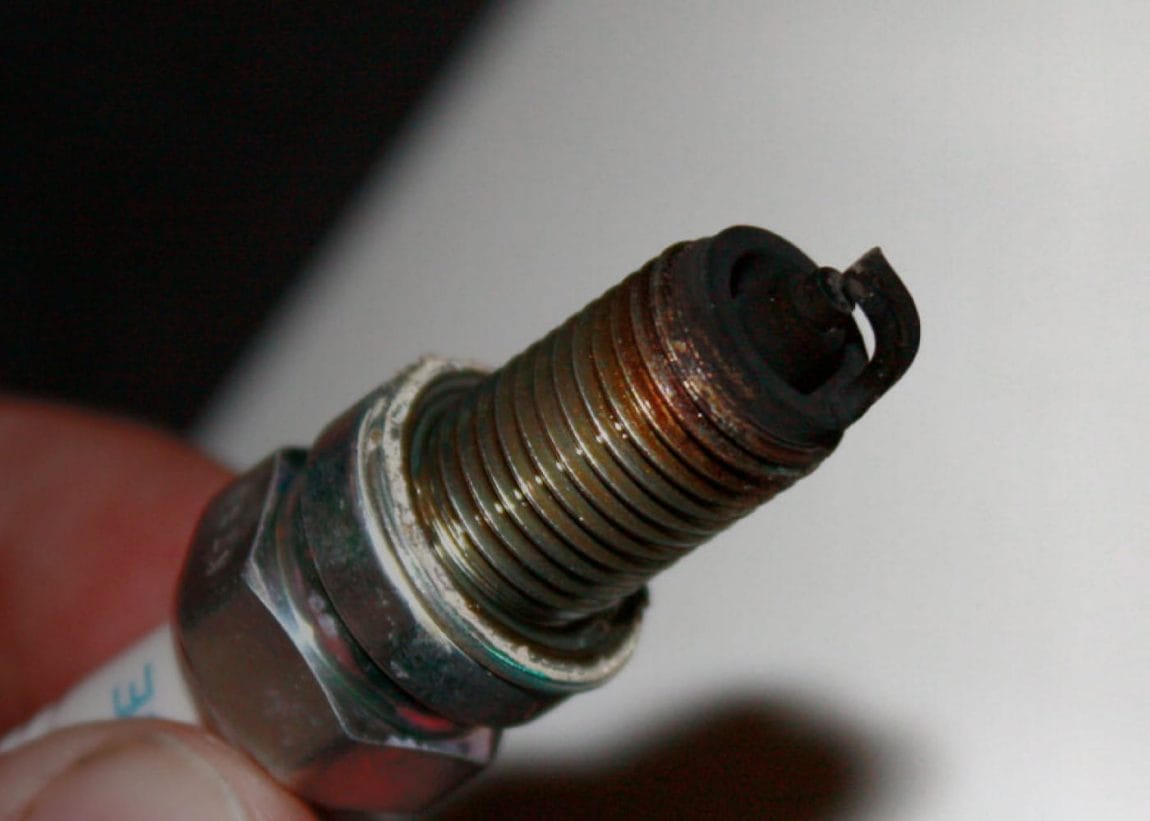
Solution:
You will have to replace your spark plugs to mitigate this issue. Here is how to do it.
- Find the spark plugs on your motorcycle, typically situated on the cylinder head and connected to thick, insulated wires.
- Carefully detach the spark plug wires from the plugs by pulling them straight off, ensuring a firm grip on the rubber boot.
- Insert a spark plug socket onto the plug and use a ratchet to unscrew and remove the old spark plug from the cylinder head.
- Check the old spark plug for signs of wear, such as erosion or deposits, to assess the engine’s condition.
- If necessary, adjust the gap on the new spark plugs according to your motorcycle’s specifications using a gap tool.
- Hand-tighten the new spark plug into the cylinder head, then use the spark plug socket and ratchet for a final secure tightening.
- Firmly push the spark plug wire onto the new plug until you feel it click into place.
- Repeat the process for each spark plug, working systematically across all cylinders.
FAQs
Here are a few more additional questions on your motorcycle dying when you give it throttle.
How often should I clean my motorcycle’s carburetor to prevent stalling?
You should clean your carburetor annually or more frequently if you ride in dusty conditions. This will help prevent stalling issues related to fuel flow.
How can I tell if the choke lever is left open on my motorcycle?
You can tell if the choke lever is left open on your motorcycle by looking at the position of the lever or the indicator light.
Can a faulty or weak ignition coil kill the engine?
Yes, it can. If the ignition coil is faulty or weak, it can affect the spark generation and cause the engine to run poorly. To solve this problem, you will have to seek a professional mechanic to diagnose and replace the ignition coil. They will have an oscilloscope, which is required to fix this.
Conclusion
Having an unexpected stall can be a frustrating and perplexing experience. However, now that you understand why your motorcycle dies when given throttle, you’re better equipped to diagnose and address these issues.
The step-by-step solutions provided empower you to take control of your motorcycle’s performance, ensuring that every ride is a smooth and exhilarating adventure. Don’t let stalling hold you back – tackle these challenges head-on and get back on the road with confidence.


